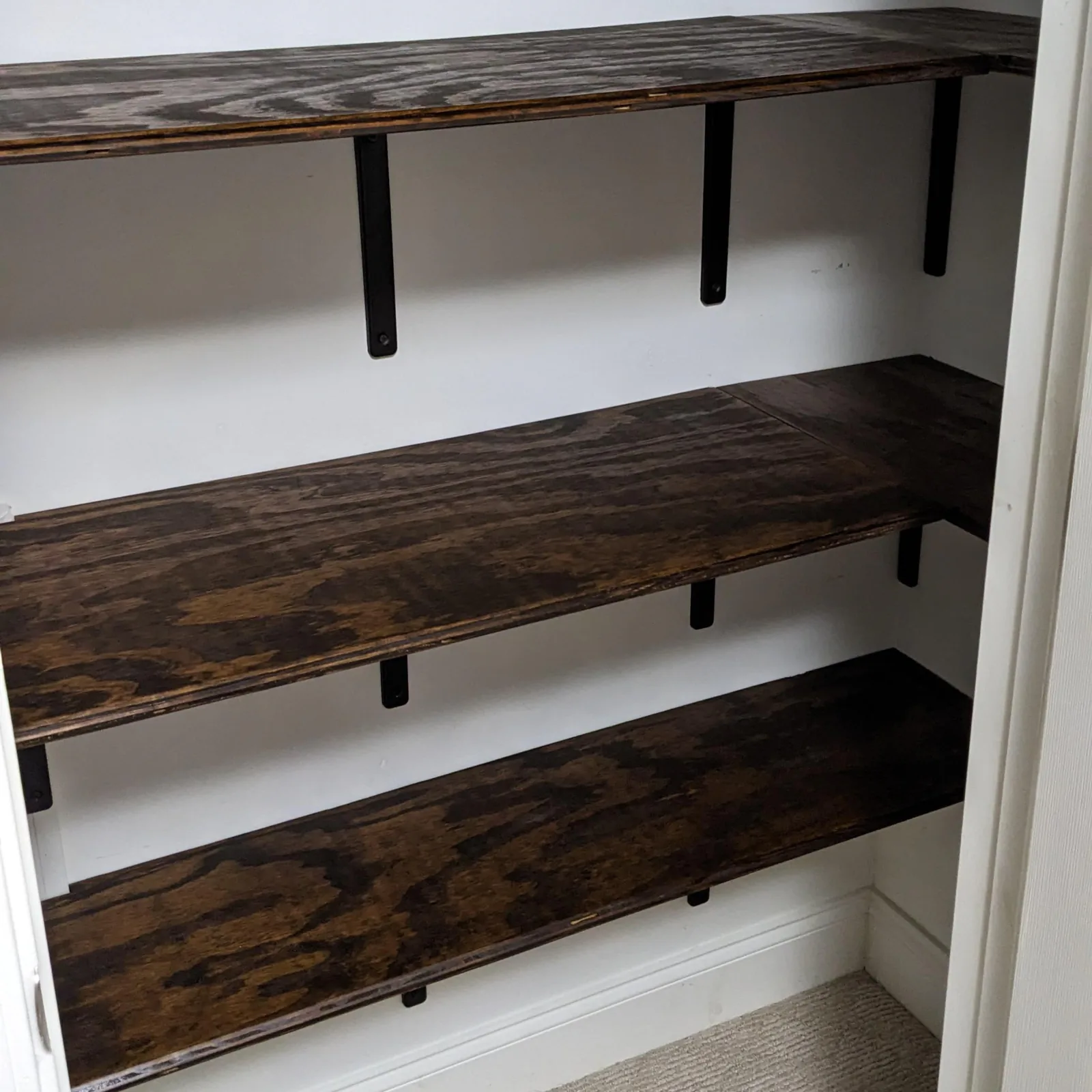Article
The best projects start with the right material. Matching species and panel types to the job saves time, looks better, and lasts longer—whether it’s a painted built-in, a stain-grade mantle, or an exterior deck.
In the Piedmont Triad, humidity swings and seasonal movement matter. We choose wood based on environment (wet/dry), finish (paint/stain/clear), load (decorative vs structural), and budget. Here’s our field guide.
“Start with environment and load—then pick the species. The right choice makes joinery, finishing, and upkeep easier.”
Paint-Grade vs. Stain-Grade (and When to Use Each)
Paint-grade: Poplar and maple are smooth and stable; MDF is excellent for interior panels and millwork in dry spaces. For cabinet boxes, use cabinet-grade plywood (birch/maple veneer). Paint hides grain, so prioritize stability and clean edges.
Stain-grade: Oak, maple, walnut, and cherry take stain beautifully and wear well on tops and trim. Choose clear, consistent grain for a refined look; knotty grades read rustic.

Engineered Panels (Quiet Heroes)
Plywood: Our go-to for boxes, shelves, and built-ins. Pick cabinet-grade (many thin plies, fewer voids). Baltic birch is very stable for drawers and shop jigs.
MDF: Perfectly flat; paints like a dream. Use for interior doors, wainscot, and trim profiles. Avoid in wet areas unless moisture-resistant (MR) grade and sealed on all sides.
MDO/Exterior plywood: For painted exterior panels, signs, and utility doors—smooth faces with weather-resistant cores.
“If the panel needs to stay flat, choose more plies and fewer voids. Flat saves you hours later.”
Project-by-Project Recommendations
Interior trim & millwork (paint): Poplar or maple for durability and crisp profiles; MDF for stable, detailed moldings in dry rooms. Prime all faces and end grain.
Built-ins & cabinetry: Maple/birch plywood for boxes; poplar or maple face frames (paint) or oak/walnut (stain). Use hardwood edge banding or solid lipping on visible edges.
Countertops & benches: Hard maple for butcher blocks (food-safe oil or film finish). Walnut for a richer, formal look. Avoid soft pine for heavy-use tops.
Doors & tabletops: Frame-and-panel construction resists movement. Choose quartersawn white oak or maple for stability; avoid wide, flat-sawn slabs unless well-seasoned and properly supported.
Bathroom & kitchen areas: Moisture-resistant plywood cores; avoid raw MDF near sinks. Seal all faces and edges; choose species/finishes that tolerate humidity.
Exterior projects (decks, porches): Pressure-treated pine for structure; cedar or cypress for trim/rail details. For premium longevity, consider ipe or thermally-modified woods; use stainless/galvanized fasteners.
Fences & garden builds: Cedar for natural rot resistance; treated pine for posts in contact with soil (rated “ground contact”).
Movement, Moisture & Cut: What Affects Stability
- Acclimate: Let lumber/panels rest in the space 48–72 hours before install (longer for thick tops).
- Grain orientation: Quarter-sawn boards move less across width and finish more evenly; use for doors and tabletops.
- Leave room to move: Use elongated screw holes, figure-8 fasteners, or Z-clips to attach tops so they can expand/contract.
- Seal all sides: Especially end grain and panel edges; moisture enters there first.
Fasteners, Adhesives & Finish Compatibility
Use PVA Type II for most interior joinery; Type I (waterproof) or polyurethane for exterior/wet zones. Pre-drill hardwoods to prevent splitting. For tannin-rich woods (oak), choose finishes and adhesives that don’t react with iron; use stainless or coated fasteners outdoors.
Grades, Sustainability & Cost
- Hardwood grades: FAS/Select for furniture-grade faces; #1–#2 Common for paint or smaller parts.
- Softwood appearance: “Select” or “C&Btr” for fewer knots in painted trim.
- Certification: FSC-certified options support responsible forestry.
- Budget wisely: Splurge on touch surfaces (tops, handrails, doors). Save with paint-grade frames and cabinet interiors.
Common Mistakes (and Easy Wins)
- Wrong species for the finish: Expect blotching on soft maple/cherry without a conditioner; test first.
- Ignoring panel edges: MDF and plywood edges need sealing or banding to look finished and resist moisture.
- Skipping acclimation: Leads to open joints and cupping—especially on wide glue-ups.
- Using interior materials outside: Even great paint won’t save the wrong substrate.
Quick Spec Checklist for Your Quote
- Room photos and measurements (and whether it’s a wet/dry area)
- Finish goal (paint, stain, clear, oil) and target color/tone
- Durability needs (kids, pets, heavy use, exterior exposure)
- Budget tier (save on interiors, splurge on touch surfaces)
- Any existing species to match (floors, doors, trim)
Not sure what fits your space? Browse our portfolio for real-world examples, or explore our services to plan your project. We help homeowners across Winston-Salem, Greensboro, Mount Airy, and nearby choose materials that look intentional and last.